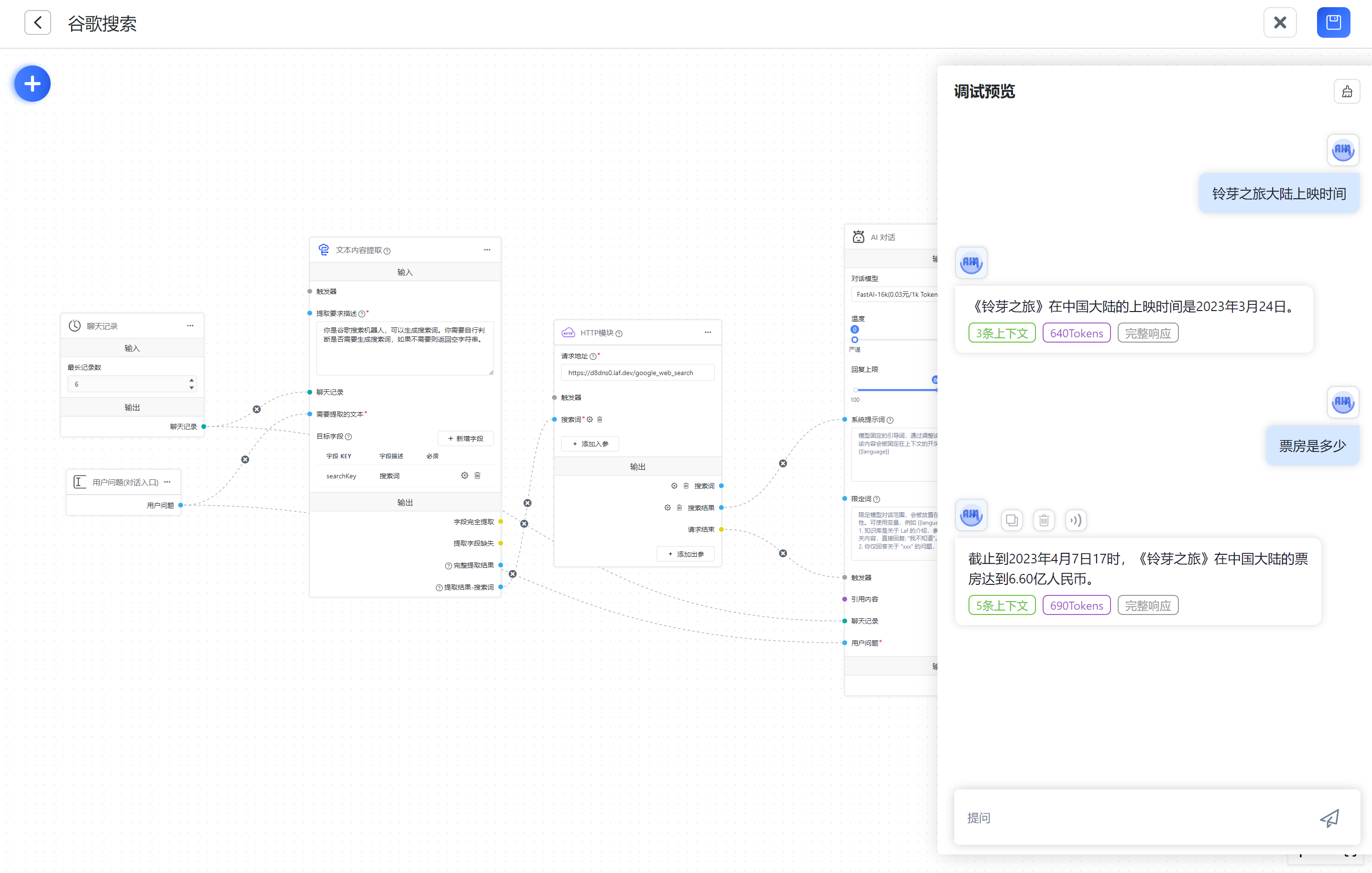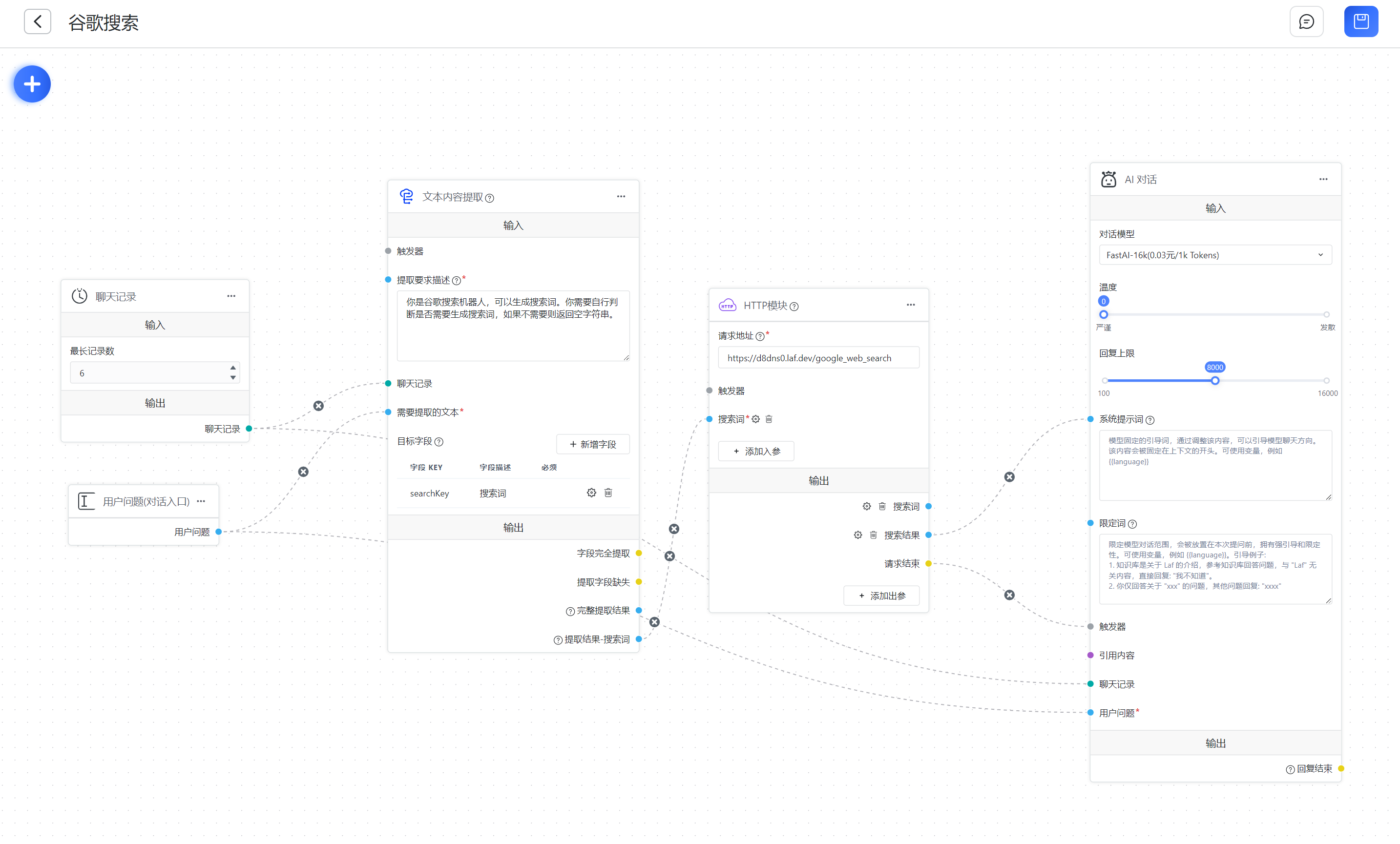mirror of
https://github.com/labring/FastGPT.git
synced 2025-07-22 12:20:34 +00:00
2.0 KiB
2.0 KiB
Google Search
As shown in the above images, with the help of the HTTP module, you can easily integrate a search engine. Here, we take calling the Google Search API as an example.
Register Google Search API
Refer to this article to register the Google Search API
Create a Google Search interface
Here, we use laf to quickly implement an interface, which can be written and published without deployment. Click to open laf cloud, make sure to open the POST request method.
import cloud from '@lafjs/cloud';
const googleSearchKey = '';
const googleCxId = '';
const baseurl = 'https://www.googleapis.com/customsearch/v1';
export default async function (ctx: FunctionContext) {
const { searchKey } = ctx.body;
if (!searchKey) {
return {
prompt: ''
};
}
try {
const { data } = await cloud.fetch.get(baseurl, {
params: {
q: searchKey,
cx: googleCxId,
key: googleSearchKey,
c2coff: 1,
start: 1,
num: 5,
dateRestrict: 'm[1]'
}
});
const result = data.items.map((item) => item.snippet).join('\n');
return {
prompt: `Here are the search results from Google: ${result}`,
searchKey: `\nSearch term: ${searchKey}`
};
} catch (err) {
console.log(err);
return {
prompt: ''
};
}
}
Workflow
Drag out a FastGPT workflow as shown in the image, where the request URL of the HTTP module is the interface address, and the input and output parameters are as follows: Input
searchKey: Search Key Word
Output
prompt: Search Result
- The HTTP module will send the searchKey to laf, and laf will perform a Google search based on the received input. It will then return the search results through the prompt parameter.
- After receiving the response, the HTTP module connects to the prompt of the "AI Dialogue" to guide the model in providing an answer.

